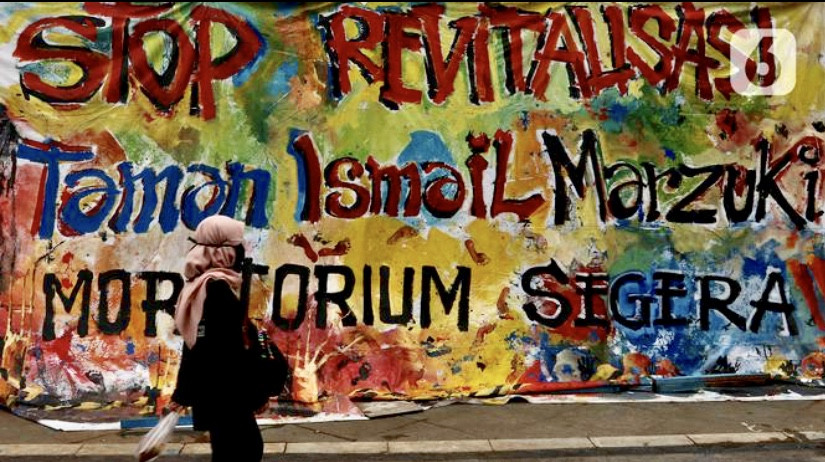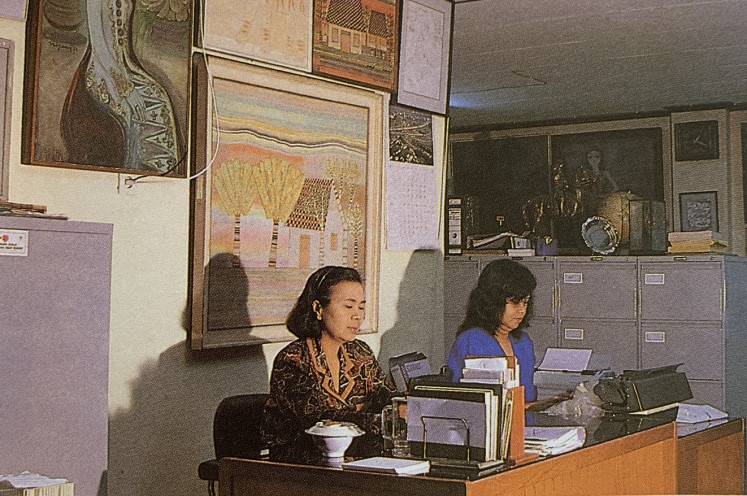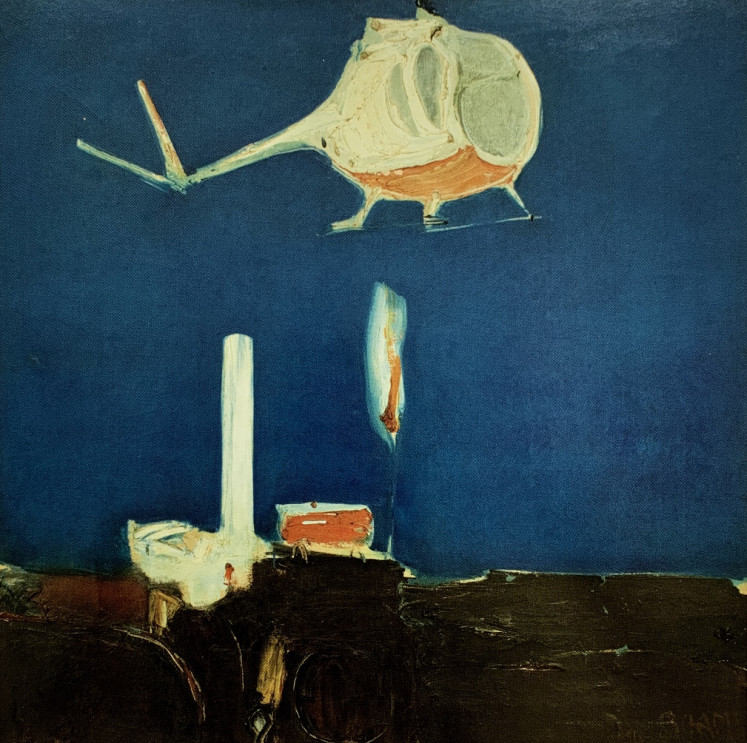Popular Reads
Top Results
Can't find what you're looking for?
View all search resultsPopular Reads
Top Results
Can't find what you're looking for?
View all search resultsHow safe are the DKJ and TIM art collections?
Change text size
Gift Premium Articles
to Anyone
A
mid public anxiety over the COVID-19 pandemic, art collections like those of the Jakarta Art Council (DKJ) and Taman Ismail Marzuki (TIM) should never be overlooked.
The adage “seize opportunities amid adversity” has remained relevant throughout the ages.
Let’s have a look, for example, at a piece of World War II history described by Robert M. Edsel and Bret Witter in The Monuments Men: Allied Heroes, Nazi Thieves and the Greatest Treasure Hunt in History, which was adapted into a movie in 2014.
In the story, which is based on true events and set at the peak of the war, Adolf Hitler covertly steals hundreds of thousands of art masterpieces from museums, galleries and private houses in the countries he conquered.
The stolen artworks – from paintings of Picasso and Renoir to the sculpture of Madonna of Bruges – are hidden in quarries.
Hitler plans to build a museum of his art collection. US President F. D. Roosevelt, who learns about the outrageous plan, promptly forms a rescue team. This mission succeeds, although thousands of artifacts are missing, destroyed or burned.
Apparently following in the footsteps of Hitler, several thieves of the current era have also grabbed opportunities in times of trouble.
While nations around the world are preoccupied with fighting the highly infectious COVID-19, thieves snatched three paintings from the Christ Church Picture Gallery at Oxford University in Britain on March 14.
One of them is the work of famous classical painter Anthony van Dyck. The three are worth US$12 million.
Two weeks later, on March 30, Singer Laren Museum in Laren, Netherlands, got robbed.
The canvas stolen was Vincent van Gogh’s 1884 work Parsonage Garden at Nuenen in Spring, a masterpiece estimated at $6.6 million, stolen precisely on the painter’s birthday.
Given those crimes, art stakeholders in Indonesia must keep a close eye on collections at the Jakarta Arts Council (DKJ) and Taman Ismail Marzuki (TIM) in Cikini, Central Jakarta.
Creative space: The painting collection of the Jakarta Art Council (DKJ) fills its office walls. (-/Agus Dermawan T.)Art critic and former DKJ executive said there was no need to worry about paintings potentially being stolen from the DKJ or the TIM complex.
“The present executives of the DKJ and TIM are of high integrity,” said Bambang.
Many agree with Bambang, because DKJ chairman Danton Sihombing is highly reputable.
However, safeguarding the painting collection at DKJ and TIM takes more than just relying on the integrity of their executives.
The first major issue is that, due to the government’s request for citizens to self-quarantine during the COVID-19 pandemic, many guards of artwork storehouses are staying at home.
The second problem is that 90 percent of the 900 paintings are stored at the TIM complex, which currently under renovation.
The TIM revitalization includes the demolition of a large part of the complex to be converted into a commercial art space, something the arts community, by the way, was opposed to.
Amid this revitalization, the DKJ and TIM collections have been moved or put into storage.
Most of the canvases were created by well-known artists like Affandi, Sudjojono, Srihadi Soedarsono, Hendra Gunawan, Zaini, Oesman Effendi, Abas Alibasyah, AD Pirous, Popo Iskandar, Soeparto, Amang Rahman, Ahmad Sadali, Dede Eri Supria and others.
“Painters sponsored by the DKJ used to have one or two of their works bought at a discount. They would normally also contribute some of their paintings to the DKJ as an expression of gratitude,” Sri Warso Wahono, a former DKJ secretary and artistic consultant of TIM, described how the paintings were collected in the first place.
“With the limited sponsorship budget of the DKJ, not all works could be bought. They were then invited to cooperate with TIM by paying rent, and the art center helped with their publication and marketing. Many painters also donated works to TIM. All this took place from 1968 to 2015,” Sri added.
Well preserved: A painting from Srihadi Soedarsono is one of some 900 paintings collected by the DKJ and TIM. (-/Agus Dermawan T.)Many artists fear to think how their artworks are handled, especially because paintings are sensitive objects. Even slight damage could cause a lot of trouble.
Not only paintings were moved, but also sculptures, graphic and ceramic artworks, leather puppets, Balinese and Javanese gamelan and even composer Ismail Marzuki’s musical notations.
According to appraisers, the asset value of the collections is almost 45 billion rupiah ($2.8 million), and it is believed that they are not insured.
Arts stakeholders’ only hope currently is that all the collections are safe and in a well-maintained condition.
In the future, when the revitalization project is completed, the collections will hopefully be housed in special rooms for public view. This is what the artists actually expected to see when they contributed their works.













